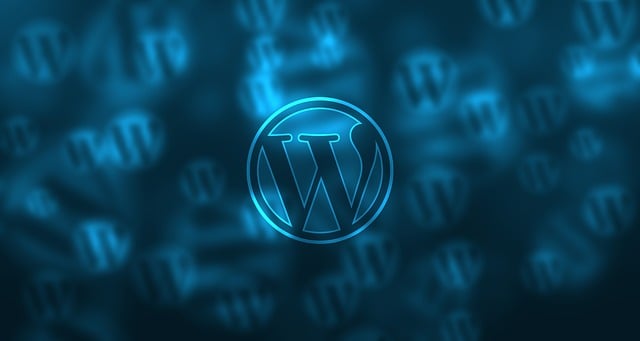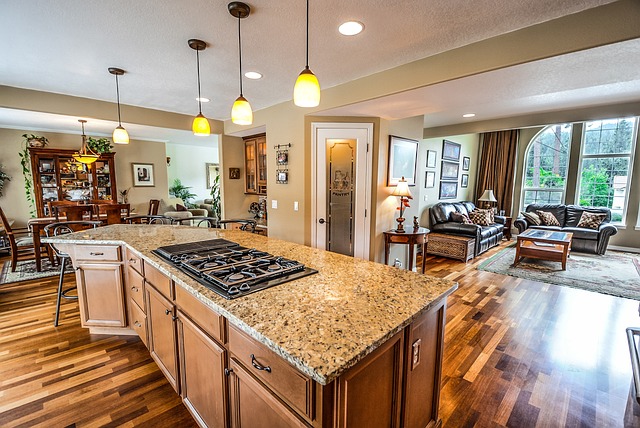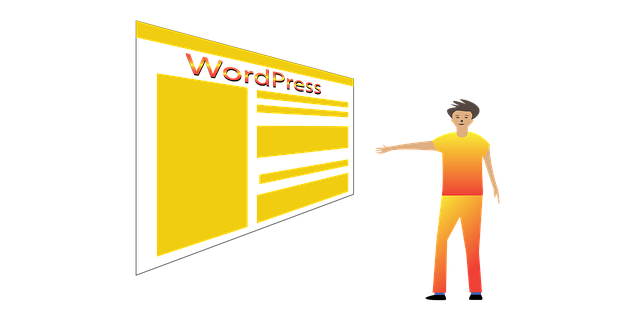Redesigning a WordPress website requires strategic planning that begins with understanding your brand identity and target audience. Conduct a thorough evaluation of the current site's performance using analytics tools, defining clear goals for the redesign. Incorporate current trends like minimalism and responsive design to enhance user experience and SEO. Prioritize visual aesthetics through theme selection, color schemes, typography, and high-quality imagery. Integrate interactive components and plugins to boost engagement and functionality. Thorough testing across devices and browsers ensures optimal performance and security. Post-launch, targeted marketing and regular updates maintain user interest and search engine rankings for a successful WordPress design.
Looking to breathe new life into your WordPress website? This comprehensive guide takes you through a strategic redesign process, from understanding your brand identity to implementing cutting-edge design trends. We’ll explore key aspects like user experience, target audience expectations, and functionality enhancements. By the end, you’ll be equipped with the knowledge to create an engaging WordPress site that captivates visitors and drives results, ensuring a successful online presence.
Understanding Your Brand Identity: Setting the Foundation for Redesign

Redesigning a WordPress website begins with a deep understanding of your brand identity. This involves recognizing and defining the core values, mission, and unique selling points that set your business apart. It’s crucial to consider how your brand personality translates into visual elements, such as color schemes, typography, and imagery, which should collectively reflect and reinforce your brand story.
By clearly establishing these foundations, you can ensure that the new WordPress design not only looks visually appealing but also effectively communicates your brand’s essence to your target audience. This strategic approach ensures that every element on the page—from navigation to call-to-action buttons—serves a purpose in enhancing user experience while aligning with your brand identity.
Assessing Current WordPress Website Performance and User Experience

When considering a WordPress website redesign, it’s crucial to first assess the current site’s performance and user experience. This involves evaluating key metrics like page load times, bounce rates, and conversion rates to understand what’s working and what needs improvement. Using tools like Google Analytics and GTmetrix can provide valuable insights into user behavior and site speed.
A thorough analysis should also focus on the website’s usability, navigation, and visual appeal. Are the menus intuitive? Do the pages load quickly? Does the design align with modern WordPress design trends while staying true to the brand identity? Answering these questions will help identify areas for redesign that enhance both functionality and user engagement.
Defining Redesign Goals and Target Audience Expectations

When embarking on a WordPress website redesign, clearly defining your goals is paramount. This involves understanding what drives your business or project forward and how your site can better support those objectives. For instance, if your primary goal is to increase conversions, your design should focus on streamlined user journeys, compelling call-to-actions, and intuitive navigation. On the other hand, a redesign aimed at enhancing brand visibility will prioritize a visually appealing layout, consistent branding elements, and strategic content placement.
Identifying your target audience’s expectations is equally vital. Different demographics have varying preferences when it comes to website design. For example, younger users often prefer minimalist, fast-loading sites with mobile responsiveness while older audiences may gravitate towards more traditional layouts offering easy readability and clear information architecture. Incorporating user feedback and conducting market research can provide valuable insights into what your audience finds appealing and functional in a WordPress design.
Exploring Design Trends and Best Practices in WordPress Websites

In today’s digital landscape, WordPress design plays a pivotal role in capturing audiences and driving engagement. To create a standout website, it’s essential to explore current design trends and best practices. One prominent trend is minimalism, characterized by clean layouts, ample white space, and a focus on high-quality visuals. This approach not only enhances user experience but also improves site speed and search engine optimization (SEO).
Additionally, responsive design is no longer an option but a necessity. With users accessing websites from various devices, ensuring your WordPress site adapts seamlessly to desktops, tablets, and smartphones is crucial. Incorporating mobile-friendly features like touch-friendly navigation, optimized imagery, and fast loading times will significantly boost user satisfaction and retention.
Architecture and Navigation: Creating a Seamless User Journey

A well-designed WordPress website should prioritize architecture and navigation, ensuring a seamless user journey from entry to exit. This involves creating intuitive structures that mirror how visitors logically navigate through information. A clean, hierarchical layout guides users effortlessly, with clear calls-to-action (CTAs) directing their paths. For instance, using breadcrumbs helps visitors understand where they are within the site and offers an easy way to return to higher levels of content.
Effective navigation also leverages WordPress’s powerful menu system, allowing designers to organize pages hierarchically and create menus tailored to specific user roles or contexts. This ensures that essential information is always accessible, enhancing usability and encouraging exploration. By focusing on these aspects, WordPress design becomes more than aesthetics; it becomes an artful blend of functionality and user experience, fostering engagement and ultimately driving conversions.
Visual Aesthetics: Choosing a Theme, Colors, Typography, and Imagery

When redesigning a WordPress website, visual aesthetics play a pivotal role in capturing and retaining user interest. WordPress Design begins with selecting a theme that aligns with your brand identity and target audience. A well-chosen theme acts as a foundation, setting the tone for the entire site. Consider a design that reflects your business personality—whether modern, minimalist, or bold and colorful—to create an instant connection with visitors.
Elements like colors, typography, and imagery further enhance the overall WordPress Design. Use a color palette that resonates with your brand and appeals to your audience, ensuring sufficient contrast for readability. Typography choices should be consistent across pages, improving user experience. High-quality, relevant imagery not only breaks up text but also communicates your message more effectively. Integrate visuals seamlessly to create a visually appealing WordPress Design that engages users and encourages them to explore further.
Functionality Enhancements: Incorporating Interactive Elements and Plugins

Redesigning a WordPress website offers an excellent opportunity to enhance its functionality and user experience through interactive elements and plugins. By integrating dynamic features, websites can come alive with content that captivates visitors. Interactive elements such as quizzes, polls, or video embeddings not only break the monotony of static text but also encourage user engagement. Plugins further expand the site’s capabilities by providing additional functions like contact forms, social media integration, and SEO optimization tools.
These additions are pivotal in a WordPress design strategy as they allow for personalized interactions, improving user retention and conversion rates. Furthermore, plugins can streamline various tasks, from managing subscriptions to enhancing security measures, ensuring that your website remains efficient and up-to-date with the latest industry standards.
Testing, Launching, and Post-Redesign Maintenance Strategies

After a meticulous WordPress website redesign, testing becomes paramount. This involves rigorous checks across various devices and browsers to ensure seamless functionality and user experience. Optimizing for speed, security, and compatibility is crucial. Utilize tools like Google PageSpeed Insights and GTmetrix to identify performance bottlenecks and address them effectively. User acceptance testing (UAT) with a small group of target users can provide valuable feedback on usability and design before the official launch.
Once ready, launching your revamped WordPress site signals a new phase. Promote it through targeted marketing campaigns to attract visitors. Monitor website analytics closely post-launch to track key metrics like traffic, bounce rate, and conversion rates. Regular updates, bug fixes, and security patches are essential for ongoing maintenance. A content strategy that keeps the site fresh with engaging, SEO-optimized content will help sustain user interest and search engine rankings, ensuring your WordPress design remains effective over time.
